ALL YOU NEED TO KNOW ABOUT ORGANIC FARMING
TABLE OF CONTENTS
1.0 Introduction
2.0 What is organic agriculture
2.1 Pros and cons of natural farming
3.0 Methods of Organic Farming
3.1 How to organic foods in 6 steps
4.0 Dietary and Health Supplements
4.1 22 medicinal plant derivates
4.2 Essential oil aromatherapy
4.3 Moroccan argan oil
5.0 Superfoods and dietary lifestyles
6.0 Food Safety and eco-friendly packaging
6.1 GMOs
7.0 Organic cosmetic derivates and ingerdients
8.0 Conclusion
Have you ever wondered why organically farmed produce are considered more beneficial ? Have you ever questioned why an ‘organic’ stamp makes a product whimsical and fancy ? Do you want to know why organic lifestyle is now a trend? Lets dive into the world of natural agriculture.
1.0 INTRODUCTION
Many celebrities have now adopted an organic lifestyle leading to a booming trend in natural produce. You know what they say “celebrities do and that we copy”. But there has to be a reason as to why all the famous people are now interested in incorporating biotic agriculture into their daily life. From the health benefits, food safety and cosmetic derivatives, we have all the secrets simplified for you. Fun fact, Japanese people have the longest lifespan, living to celebrate birthdays for 116+ years. The Japanese older generation have associated their long-life span to their natural and chemical-free lifestyle. But first of all, what exactly is organic agriculture?
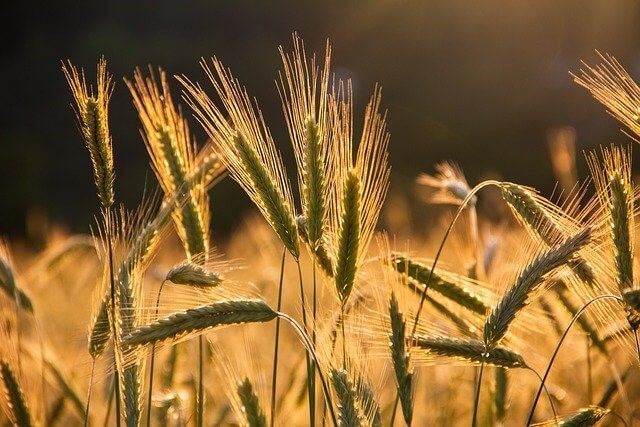
2.0 WHAT IS ORGANIC AGRICULTURE
The term organic refers to anything derived from natural living matter. Agriculture means the cultivation of soil to grow crops for food and other useful products. Therefore, organic agriculture is the farming of food, crops and products using natural methods that are free from artificial components such as synthetic fertilizers, pesticides, GMOs and much more. Natural cultivation depends on ecosystem governance to eliminate the use of any man-made elements. Mother nature has simply provided us with the best system to cultivate and grow produce that are healthier and more beneficial, here is why we should take full advantage of that. Lets start by looking at the differences between natural and artificial produce.

Organic vs Inorganic produce
Grown with biotic fertilizers such as compost Cultivated with industrial fertilizers containing
and manure (who knew animal dung would chemicals and synthetic components.
be so useful!).
Pests are managed using biologically derived Pests are controlled with pesticide sprays
pesticides or simply allowing insects and birds. made of a chemical and its liquid carrier
to do the job.
Weeds are controlled by crop rotation, Man-made herbicides are applied to land
mulching, hand weeding or using chemical-free to eliminate weeds.
herbicides.
Animal produce obtained from livestock fed with Livestock are administered growth hormones
hormone free and GMO-free food. for accelerated growth.
Livestock disease is averted by healthy diets and Animals are fed with genetically modified
rotational gazing by moving of animals from food items, diseases are controlled by
one portion of pasture to another. antibiotics and some industrial drugs and
Farm animals must be allowed outdoor and are medications.
free to roam around. Livestock may not have access to outdoors.
2.1 PROS AND CONS OF NATURAL FARMING
There are some debates as to whether biotic agriculture truly has more advantages than disadvantages connected to it. As we now know, organic agriculture focuses on growing and cultivating produce in an organic matter. Lets now explore both the good and bad side of natural cultivation for food and produce.
Pros
• It is more sustainable and eco-friendly
• It contains higher nutritional values
• Eliminates the use of synthetic components making environment safer for local wildlife
• It requires and uses less energy
• Natural waste can be composted and reused
• Limits consumers from exposure to synthetic components that could potential be harmful
• Decreases possible pollution of groundwater
• Eliminates the impacts of using genetically modified organisms
• Generally better for the climate
• Diminishes soil pollution
Cons
• Food and produce may be of higher cost
• More difficult to control pest
• Generates a higher certification cost
• It can be more time consuming
• Can lead to unpleasant smells due to the use of animal manure
• Regulatory standards might be hard to meet
On a higher scale, when comparing artificial to natural agriculture. The benefits out-weight the disadvantages. Now, you might start to wonder why is chemical-free farming more eco-friendly? That is simply because organic cultivation leads to more carbon sequestration, this is the capturing and storing of excess carbon dioxide (CO2) in the atmosphere. Why is Carbon sequestration good for the environment? It reduces climate change. A change of earth’s climate poses a lot of risks for farm lands, rising temperatures have increased the likelihood of droughts, storms and heatwaves which are all factors that make it more difficult to raise live-stocks and more importantly to grow crops. As carbon dioxide is a greenhouse gas, it is very important to control its level in the atmosphere in order to reduce its impact on climate change, this job is done for us by organic farming.
Organic agronomy significantly improves the health levels of the soil, water, environment and humans. The soil is the building foundation of all cultivation, hence supporting and maintaining the soil is the most important aspect of agriculture in order to yield for a fertile and healthy soil. A potent soil can withstand external risk factors such as drought and further provides higher nutrient (i.e nitrogen, potassium, calcium and much more) levels for crops to grow. The Natural Resources Conservation Services (NRCS) has listed down 4 guidelines and principles that keep a soil healthy for farming and cultivation of crops:
• To advance and maximize bio-diversity
• To minimize external and internal disturbances
• To keep soil covered
• To withhold the living roots
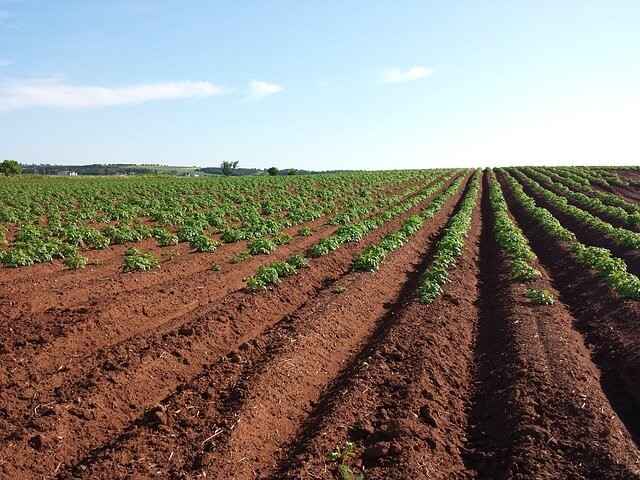
Keeping the soil healthy gives good structure which allows the soil to maintain crops through heavy rains erosion, run-off and dry spells. In addition, this leads to a decreased requirement of irrigation water. Although the demand for biotic food and products are now higher than before, the main factor that leads to the general population opting for nonorganic products is due to the costly price. For a product to be eco-friendly, greater amount of work and effort has to be put into the cultivation, production and manufacturing using components that are purely made of organic matter. On the other hand, large amounts of nonorganic produce, crops and food can be made in a faster and easier way by implementing the use of genetic and molecular level modification allowing for the cross-breeding of crops. This generates higher quantities of food and produce in a much faster way and also making it cost efficient for the people.
3.0 METHODS OF ORGANIC FARMING YOU SHOULD KNOW
Whether you are a farmer, an agriculturist or just into the organic food and produce business. There are some practical and technical tips that everyone should know about. These ideas ranging mechanical and external environmental methods birth for a more successful biological cultivation, and we have them all untangled for you.
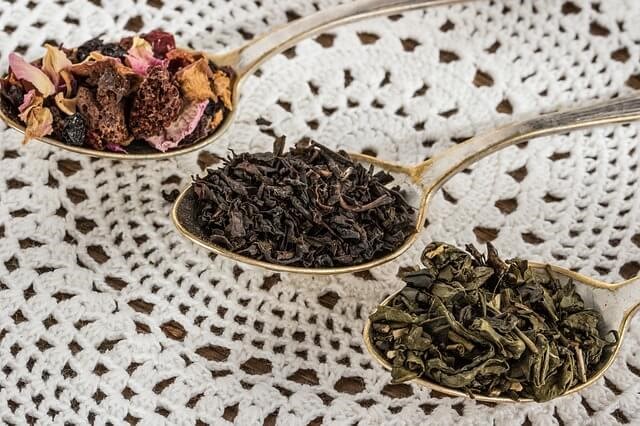


–> Crop Rotation: This method employs a smart way to supplement the soil with numerous amounts of nutrients. Farmers should not grow the same crop at the same farming land continuously but rather should keep rotating by cultivating different types of crops on the same land area. This allows for crops to contribute their own different nutrients to the soil making it fertile and healthy for the next cultivation. This eliminates the possible risk of nutrient depletion. Crop rotation works in the same way with the human health system where-by we have to eat a balanced diet consisting of many different classes and types of food in order to attain all the nutrients we need for our body to function, each nutrient has its job of focus which contributes to our general wellbeing. Likewise, the soil is equivalent to the human body and the crops are the foods that the soil requires in order to replenish with many varieties of nutrients. These nutrients each contribute in keeping our soil healthy, fit and fertile for cultivation. Simultaneously, this reduces pressure from insects, weed and also helps in avoiding soil erosion.
–> Weed Management: weeds also known as wild grasses are a bunch of unwanted plants that grow along with the agricultural crops resulting in a competition for nutrients, water and sunlight. Weeds can massively reduce yielding of crops so the aim of this method is to lessen the growth of these unwanted plants rather than eradicating them. The good thing is farmers can use any of these 3 options in order to control weeds:
• Manual weeding is when the farmer physically removes the weed by themselves with the help of some farm tools and appliances. This works best mostly on smaller growth weeds.
• Mechanical weeding in this method, plant residue or plastic films are used on the surface of the soil to block the growing and spreading of unwanted plants.
• Thermal control was used in the 1940 and 1950s before the invention of artificial pesticides. A powered flame thrower is used to get rid of weed in crops that are ideally arranged in wide rows.
–>Crop Diversity: You might have heard of the word ‘polyculture farming’ which is trending nowadays. This is the practice of cultivating numerous varieties of crops simultaneously in order to attain the increasing demand of supply worldwide. Back in the day, farmers practiced a more traditional method knowns as ‘monoculture farming’ whereby only one type of crops is cultivated in the same area to grow organic produce.
–>Soil Management: The soil is the primary foundation of organic farming. Soil depletes and loses its quality as nutrients decrease after each cultivation of crop’s, therefore we have to help replenish it and make it fertile again. Bacteria from animal dung or manure helps in replenishing nutrients. Like-wise the addition of natural fertilizers such as compost and vermicompost help promote soil growth and richness. What is vermicomposting? A vermicompost is an organic by-product of the decomposition process of many different species of warms. This product is rich in soil amendment nutrients, the process of applying a vermicompost to the soil for the purpose of nutritional amendment is therefore referred to as vermicomposting. An important technique in organic farming and agriculture.
–>Biological Pest Control: An agricultural land is home to many organisms where some help with crops growth while others disrupt crop yielding. Hence natural pesticides and herbicides can be used by farmers to control disruptive pests. Some common organic pesticides include;
• Neem leaf oil used in a mixture of liquid soap and warm water. This is a non-toxic spray which can be used to keep the bus away from your plants. It is known to be effective for as long as 22 days.
• Eucalyptus oil applied to plants help control pests biologically.
• Chrysanthemum flower tea are known to have a powerful plant component known as pyrethrum. This component annihilates the pest system which ultimately destroys it.
• Salt spray is made simply from salt and water. This helps with pest control and also improves the plants nutritional absorption of important nutrients such as magnesium phosphorus and sulfur.
• Onion and garlic spray keep’s the pests away due to the strong odor.
Thanks to these many methods and techniques that allow for simplicity in organic cultivation, many people can now grow their own crops, fruits and vegetables in their back gardens. By growing your own organic garden, you are then contributing in the greater cause to reduce toxic greenhouse gasses in the earth’s atmosphere. The practice of natural farming is hugely beneficial for both the economy and society as a whole. Not to mention you are also on the path to success through a healthier lifestyle. You can now introduce organic gardening as a fun hobby in your life, this can be a fun activity enjoyed together with family and friends or in big groups. But first, How do you grow organic foods in your garden? It is a simple procedure, let’s help you out.
3.1 HOW TO GROW ORGANIC FOODS IN YOUR GARDEN IN 6 STEPS
Here are 6 easy and simple steps to follow in order to grow some organic items in your home garden.
1. Start with a plan: Come up with a plan of action taking into account your financial budget, the ideal crop type and utensils to invest in
2. Note when soil temperature is perfect for germination: Planted seeds respond to soil temperatures. Some seeds require a warmer temperature while some a cooler one. For example, corn germinates best in worm temperatures, anything less than 10°C will result in a failed germination of corn.
3. Implementing organic farming methods: Adding manure and natural fertilizers provide extra nutrients for your plants. Cover crops can be used to help eliminate soil erosion and growth of unwanted weeds.
4. Introduce a balanced eco-system: Some insects can help growth of plants, they can also protect your plants from other potentially harmful insects. The aim is to have a perfectly balanced eco-system.
5. Rotate your crops: After cultivation has been harvested, you should rotate in another crop of your choosing to help balance and retain the soils composition of nutrients before the next planting season.
6. Be aware of the ‘organic certification’ requirements: To be certified in organic farming, a couple of guidelines have to be followed which proves the produce is free of chemical, artificial and synthetic elements.

4.0 ORGANIC DIETARY AND HEALTH SUPPLEMENTS: A BEGINNER’S GUIDE
Following the recent increasing trend in organic agriculture, 2018 was another record year for worldwide increase in organic demand and supply. Records state India continues to be the highest producers of organic goods followed by Uganda and Ethiopia. Countries like Morocco have seen an exponential increase in the demand, supply and consumption of organic produce. Morocco however is big on the production of organic medicinal plants and essential oils. Here we will explain to you all the health benefits of organic lifestyle. A question we have all asked ourselves when grocery shopping is should I opt for the organic produce? Here is why you should switch to an organic lifestyle.
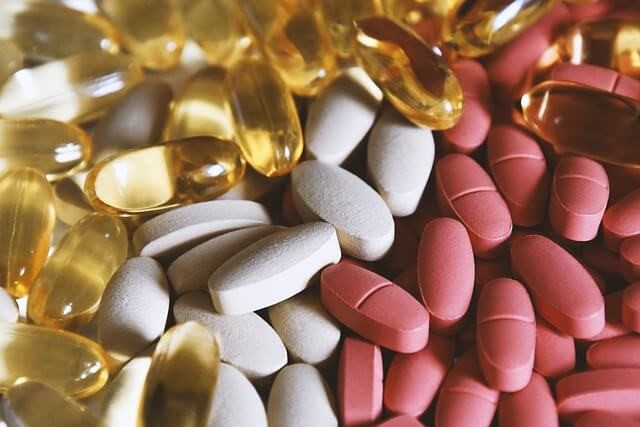
What are the impacts of Organic supplements on health?
Now the best way to make sure you are getting all the nutrients your body needs is by endorsing in a healthy lifestyle by following a balanced diet at all times. A balanced diet is key, but sometimes our body needs that boost of essential nutrients and elements to replenish our body cells and maintain the bodily functions to the best of their abilities. Especially now with the rise of processed food items, due to their lower levels of nutritious elements one might be lacking in all the essential mineral and components needed by the body. This is when taking organic supplements helps as a booster. As you can imagine, each and every type of vitamin and mineral has its own function, purpose and benefit. These functions can range from bone growth, hair-strength, eyesight and much more hence why it is important to ensure a balanced diet is accompanied by health boosters. Here are 5 ways organic health supplements will benefit you:
1. They contain additional antioxidants: Studies have now proved natural farming of crops such as carrots, strawberries and blueberries allows them to have a substantially greater amounts of antioxidants compared to chemically grown crops. This is because natural plants fight off pests and diseases without the help of a synthetic element making them develop a strong immunity to protect themselves. The organic health supplements are derived from these naturally grown produce. What is an antioxidant good for? Otherwise known as “free radical scavengers” an antioxidant is a substance that protects our cells from damage caused by free radicals. Free radicals are unstable elements produced as a result of bodily functions such as the breakdown and digestion of food. If the body doesn’t eliminate these radicals efficiently, oxidative stress is bound to occur. This harms the body cells and can cause a wide range of illnesses such as respiratory disease, heart disease, cancer and stroke. Factors that affect the increased production of free radicals can be internal or external for example smoking cigarette and UV radiation exposure. Antioxidants neutralize the effect of free radicals on our cells and tissues which in turn limits the risk of diseases. Some examples of antioxidants include: Vitamin A, Vitamin C, Vitamin E. Each antioxidant serves a different purpose hence why its important to ensure a balance by taking natural supplements. Foods that contain high levels of antioxidants are known as superfoods.
2. More nutritious: Supplements replace all the nutrients you might have missed out from your daily meal. Being grown in a healthy nourishing soil ensures supplements are packed with all the required elements. This also ensures easier nutrient absorption as the body can absorb natural vitamins much easier and more efficiently than the synthetic form of vitamins.
3. Free of toxic chemicals: A wide number of artificial pesticides and herbicides used in inorganic agriculture are carcinogenic and harmful for the body tissues. Therefore, we have to make a conscious effort in our dietary choices to reduce the risks of such fatal diseases. Taking organic health supplements ensures a chemical-free lifestyle, and reduces the risks of being exposed to numerous harmful and toxic substances.
4. Immune system support: These supplements can be thought as elements that help boost and strengthen the immune system, having a strong immunity allows the body to fight off unwanted foreign substances in order to avoid us from getting sick.
5. Improves appearance: Clear skin, voluminous hair, luscious eyelashes, strong nails, you name it. If any of these characteristics is something you would like to possess, then organic oral health supplements should be your best-friend.


Why do some people need natural health supplements more than others ?
Now, some people require these oral boosters more than others. For example, pregnant women or women actively trying to conceive. Expecting mothers should consume approximately 400 micrograms of folate on a daily. Folate is a type of vitamin B which is essential for producing the baby’s genetic material such as DNA. Hence, a way to avoid genetic birth defects is by the regular consumption of oral vitamin supplements alongside healthy foods rich in B-vitamin. Another example of a group of people that need oral boosters more than others are the elderly population. Unfortunately, as we age our health starts to decline, it is therefore crucial to take the extra steps needed to live a complication-free life as we age. Older adults need certain vitamins and minerals more than younger people, Calcium and vitamin D are important in keeping the bone strength and regeneration of bone tissues. Older adults are required to take natural health supplements daily to keep away from certain disease such as osteoporosis also known as ‘porous bone’. Having such a disease increases the risks of unexpected bone fractures and much more. Finally, a group of people that requires supplements are those with restricted diets such as vegans. As they may not be able to eat certain food items, essential nutrients and mineral components are lacking in the diets. This can simply be fixed with taking daily organic health supplement.
4.1 22 MEDICINAL PLANT DERIVATES
Medicinal flowers grow naturally all around us, tempering with their cultivation affects the healing benefits of these plants. Therefore, it is crucial that medicinal plants are left to grow naturally and in a biotic environment. In the United states alone, out of 118 out of 150 prescriptive drugs are derived from natural sources. In 1960s, a child suffering from leukemia is at risk of a 10% chance of remission where-as now days the occurrence of remission has been increased to 95% as a result of drugs that are derived from a native wild plant of Madagascar known as ‘rosy periwinkle’. A large population of South Asia have no access to modern pharmaceutical drugs and rely solely on native medicinal plant species. Now our ability to utilize wild plant resources depends on many factors. Stability of food supplies and crops are constantly threatened by pests, climate change, diseases and so much more, therefore we need to implant a system to control these factors in an artificial-free and synthetic-free way as this produces highly medicinal wild plants. We humans tend to go crazy as soon as we make a discovery, wild plants have received a substantial amount of attention in the recent times which is causing overharvesting resulting in a risk of extinction for some of the medicinal plant species. According to the World Conservation Union (IUCN), over 15,000 wild plant species are now at a risk of extinction all caused by overharvesting. A few examples of extinct species include Slippery elm ‘Ulmus rubra’ native of North America and used for soothing coughs, skin irritations and gastrointestinal ailments. Another specie at risk of extinction is the Chinese Yew ‘Taxus species’ used to produce a popular and effective cancer drug known as taxol. At the current fast rate, wild plant experts are estimating an earth’s loss of at least 1 potential major drug every 2 years.
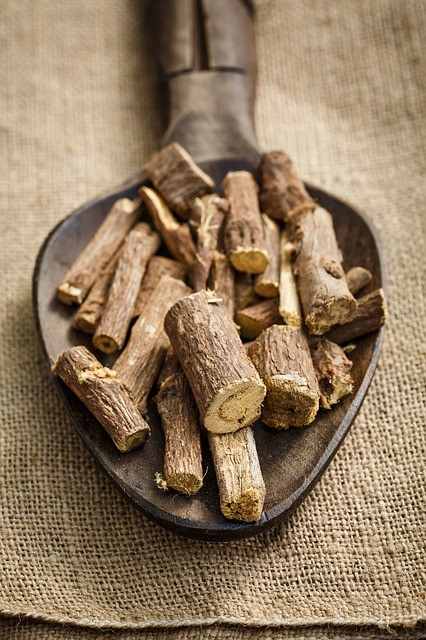
22 examples of natural medicinal plant derivates
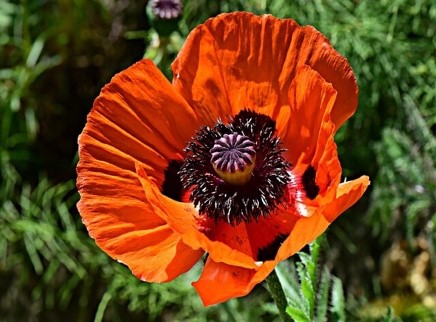
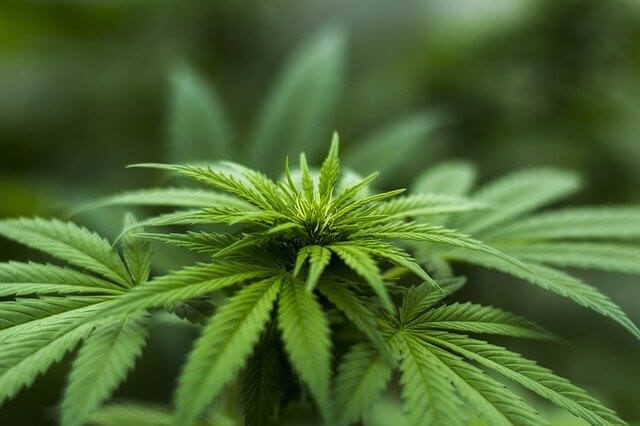
DRUG | Medicinal use | Origin | Natural Source |
Aspirin | Lower’s risk of heart attack, cures blood flow problems, used as a pain reliever | Europe | Willow ‘Salix species’ |
Digitalis | Used to treat heart failure | Europe | European foxglove ‘Digitalis purpurea’ |
Codeine | Suppresses coughing and used as a pain reliever | Southeastern Europe and western Asia | Opium poppy ‘Papaver somniferum’ |
Hoodia | Used for weight loss | South Africa | Hoodia plant ‘Hoodia gordonii’ |
Penicillin | Cures bacterial infection | Widespread across the world | Penicilium fungus species |
Tubocurarine | Muscle relaxation for surgery | South America | Curarine vine ‘ Chondrodendron tomentosun’ |
Taxol | Treating cancers | North America and Asia | Taxus species |
Scorpolamine | Used as a sedative | Americas | Datura and Solananceae species |
Aloe | Treating burns and wounds | South Africa and Arabian Peninsula | Aloe species |
Camphor | For rheumatic pain relief | Asia | Camphor tree |
Irinotecan | Treating colon cancer | China | Xi shu tree ‘Camptotheca acuminata |
DRUG | Medicinal use | Origin | Natural Source |
Quinine | Malaria and heart disease relief | South America | Cinchoma species |
Shikimic acid | Cure of viral diseases such as influenza | Asia | Star anise |
Topotecan | Lung and ovarian cancer treatment | China | Xi shu tree ‘Camptotheca acuminata’ |
Pilocarpine | For treating glaucoma | Amazon Basin | Jaborandi plant ‘Pilocarpus species’ |
Gamma-linolenic acid | Nerve damage and eczema treatment | North America | Evening primrose ‘Oenothera biennis’ |
Blood root | Treatment of skin cancers and disorders | Southeastern United States | Bloodroot ‘Sanduinaria’ |
Madagascar periwinkle | Used for Hodgkin’s disease and leukemia | Madagascar | Madagascar periwinkle ‘Cathsranthus roseus’ |
Tazopsine | For Malaria | Madagascar | Strychnopsis thouarsii bark |
Pseudoephedrine | For treating nasal decongestion, bronchodilation and allergies | China | Ma huang shrub ‘Ephedra sinica’ |
Colchicine | Gout cure | Eurasia | Autumn crocus ‘Colchicum autumnale’ |
Devil’s club shrub | Diabetes and tuberculosis treatment | Western North America | Oplopanax species |
Now that we have explored the health benefits of organic supplements and natural medicinal plant derivates, it’s time to dive into the world of essential oils and aromatherapy.
4.2 ESSENTIAL OILS AROMATHERAPY: DOES IT REALLY WORK?
What is aromatherapy? Aromatherapy is a healing treatment that uses essential oils to improve physical, mental and emotional health. This is a holistic treatment that has been used in ancient times in China, India, Egypt incorporating natural medicinal plant extracts to promote well-being. This is sometimes called essential oil therapy.
What are essential oils? Essential oils are compounds extracted from natural plants each with its own unique essence. These oils can be captured through methods such as distillation or mechanical pressing. These oils can then be inhaled or applied to skin directly for medicinal purposes in aromatherapy. When inhaled, it is thought of that the aroma can stimulate the limbic system of the brain which deals with emotions, behavior and memories. It also plays a role in many unconscious physiological actions in the body such as blood pressure, breathing and heart rate, hence why it is believed that essential oils can exert a physical improvement in the body’s wellbeing
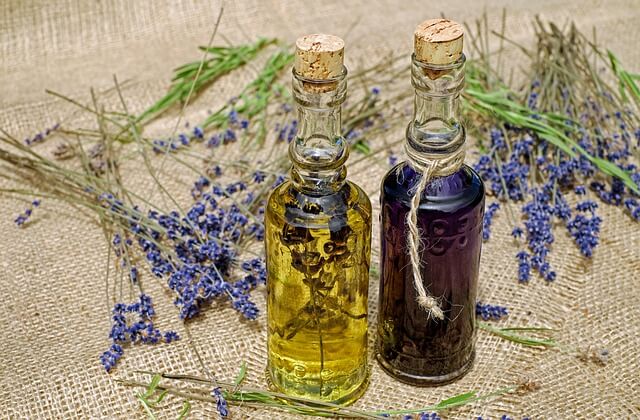
Essential oils have wide array of uses outside aromatherapy. Many people use them to scent their homes and to freshen up laundry. Some natural homemade cosmetic brands use these oils as a way to induce natural scents in their products. Furthermore, studies have shown that certain essential oils can actually be used as mosquito repellent. Citronella oil may repel mosquitos for up to 3 hours. Another useful way oils can be used is industrially to extend to shelf life of food items and products.
Benefits of natural essential oil aromatherapy
• It boosts general immunity
• Improves quality of sleep
• Soothes joint aches and soreness
• Reduces labor discomforts
• Fights against virus and bacteria
• Elevates digestion
• Helps to manage some side effects of chemotherapy
• Soothes migraines and headaches
• Helps to reduce stress and anxiety
Medical conditions that can be treated by aromatherapy
• Menopause
• Erectile dysfunction
• Insomnia
• Depression
• Arthritis
• Cancer
• Alopecia
• Peripheral neuropathy
• Inflammation
Top 10 most popular essential oils
• Lemon oil: commonly used to help with digestion
• Lavender oil: known to ease stress and anxiety
• Sandalwood oil: used to help with focus and ease nerves
• Rose oil: helps to reduce anxiety and helps elevate mood
• Ylang-Ylang oil: treats feelings of nausea
• Jasmine oil: can be used to help increase libido and ease childbirth
• Peppermint oil: Boosts energy and digestion
• Bergamot oil: helps to improve skin conditions such as eczema
• Tea tree oil: can help in fighting all kinds of infections
• Chamomile oil: improves mood and boosts relaxation
Role of natural essential oils in treating Asthma: A case study
A New York based doctor MD, MPD Erin Stair mentioned “Asthma is a condition that often gets worse in anxious moments, but first of all what is Asthma? This is a condition where a person’s airway swells and narrows causing for a difficulty in breathing. This can be minor or major life-threatening attacks. Some natural essential oils are beneficial in treating asthma as they have anti-inflammatory actions. Now, these oils are not meant to replace medically prescribed drugs but rather a way to help soothe and treat symptoms of minor asthma attack reoccurrence. After some extensive research and analyzation, it has now been proven that natural oils indeed do have a medical use.
Example of oils with potential to treat asthma symptoms:
Lavender oil: According to an animal study conducted in 2014, Adding lavender oil to a diffuser or humidifier allowing for breathing in of the diffused oil helps reduce airway inflammation which is caused by allergies and Asthma.
Clove oil: Now you may know clove to be a popular ingredient in the culinary world but it can also be used for medical purpose. Oil helps to reduce chest pain and wheezing.
Eucalyptus: Also helps in treating the symptoms of asthma but not suitable to use on children.
Rosemary: A 2018 study carried out on asthmatic patients proved rosemary is able to reduce various symptoms of asthma such as coughing, wheezing and sputum production in patients that have not responded well to traditional treatments previously.
Now that we have covered the health benefits and importance of essential oils, there are some factors to consider and precautions to be taken before using these oils. A few questions to ask yourself before use: Does the oil need to be diluted? Is the oil safe to ingest? Does the oil increase photosensitivity? Is the oil safe to use around infants and children?
4.3 MOROCCAN ARGAN OIL: HERE’S WHY YOU SHOULD START USING IT
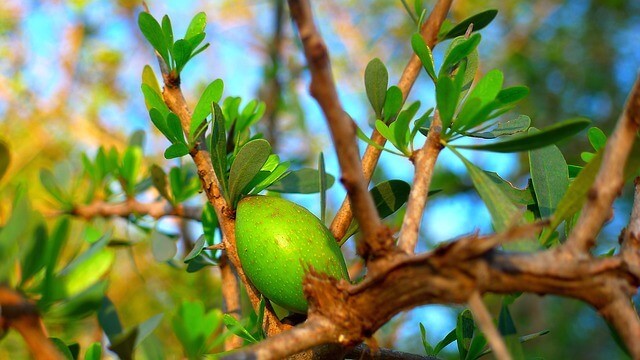
You might have come across argan oil hair products as they have become trendy recently. Argan oil is native to Morocco although now used across the globe for its numerous uses and benefits. What is argan oil? This is a plant oil made from kernels of argan tree, which is native to Morocco. The Moroccans have been producing and using argan oil for centuries now, mostly used for cooking and cosmetic reasons. Argan oil contains vitamin E (tocopherols), the berber women of Morocco have been using traditional methods to extract the oil from its kernels. The berber farmers have been growing argan tree using natural methods, free from synthetic and artificial components thereby making the products from the trees 100% organic. With recent booming trend of the oil, increasing demands across the globe has led to many producers to add water and some other elements to make larger volumes of argan oil leading to the random checks been carried out on shipments of argan oil by the Moroccan government. Even with the increased demand, Morocco still stands as the only country that has argan trees growing naturally. The Maghreb region of Africa not only uses the oil for cosmetic reasons, they also consume it. It is used as a dip for bread or used to make couscous due to its numerous health benefits.
Extraction and production of argan oil
The fruit of the argan tree contains a nut inside it which encloses the argan kernels. The fruit is first dried out in open air then the pulp is removed to provide the nut. The next stage is cracking of the nut to obtain the argan kernels. These kernels are then gently roasted and allowed to cool down before they are grinded to produce fresh unfiltered argan oil. The berber women carry out all these processes by hand as several attempts have been made to produce mechanical machines to make the extraction process easier but none have been successful.
After the first sale of the product was successful in United States for cosmetic reasons, in 2012 the government of Morocco aimed to increase the production of the oil as a result. In 2020, The area of cultivating argan trees has now been expanded to include Agadir city, whereas previously they were only cultivated in the city of Essaouira. Mechanical extraction of the oil has started on an industrial scale resulting in local argan businesses at a loss.
10 health benefits of using argan oil
1. Contains essential nutrients
2. Has antioxidant and anti-inflammatory properties
3. Boosts heart health
4. May have benefits for diabetes
5. Reduces signs of skin ageing
6. Treats some skin conditions and diseases
7. Promotes faster wound healing
8. Moisturizes skin and hair
9. Used to prevent stretch marks and acne
10. May have anti-cancer effects
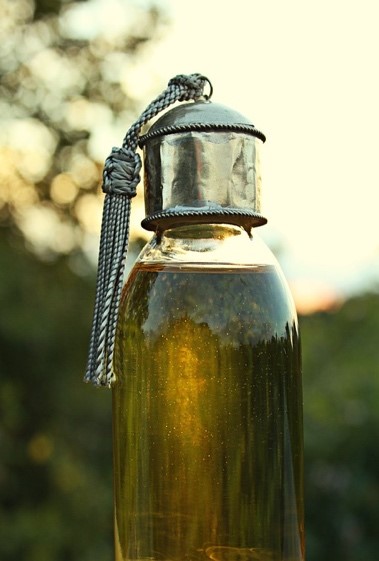
5.0 SUPERFOODS AND DIETARY LIFESTYLES
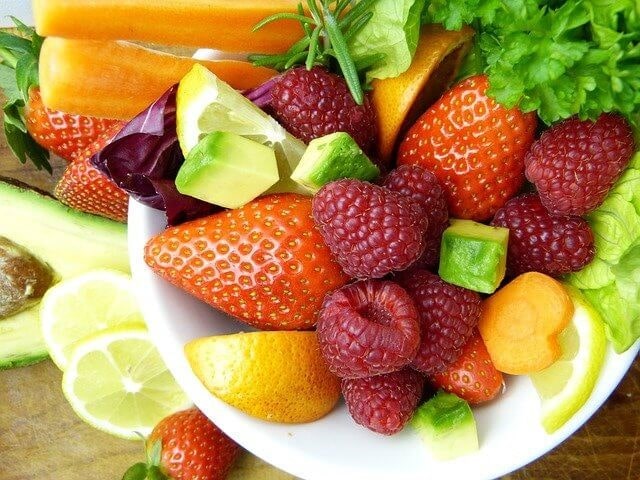
Here’s a little secret, there is no such thing as a ‘superfood’ as there isn’t a single food item that carries all the nutrients, energy and health benefits there is to offer. However, the food industry has labelled some foods as ‘super’ as they are rich and packed with important nutrients and minerals that positively impact health, bodily functions and general well-being. The term was coined as a marketing strategy to influence people to buy certain products and also a way to attract people into healthy eating. Hitting two birds with one stone I must say. The 2015-2020 US Dietary guidelines recommended healthy eating lifestyle and habits by ‘combining healthy choices from across all food groups – while paying attention to calorie limit’. There are many reasons as to why humans should try and attain a healthy eating habit and lifestyle, we need to uphold a healthy internal medium whereby the body is not prone or at risk of many diseases and illness that are caused by unhealthy eating lifestyles. If in a situation where one has a health condition then one needs to put more care into the food they are consuming. Many are also now trying different ways to diet for the sake of loosing weight. The best way to have a successful low-calorie diet and weight-loss is by incorporating these nutrient rich and energy packed superfoods, whereby a person is eating less calories but highly nutritional intake. Some have specific diets for religious reasons for example the Hindu vegetarians and vegans that have diets lacking in certain nutrients and elements that come from meat and dietary products, the best way to ensure a balanced diet for these group of people is by eating lots and lots of superfoods and also taking organic health supplements to replace the missing components of their diet. The best way to produce ‘super’ foods starts with the farming method and cultivation used. Natural organic agriculture produces the best and safest nutrient rich foods as mentioned earlier. Here is a list of the most popular highly nutritional organic superfoods and their health benefits.
8 popular superfoods and their health benefits
1. Mushroom: Some of the most popular edible mushrooms are portobello, shiitake and oyster mushrooms. Mushrooms mostly contain vitamin A, fiber, potassium and several antioxidants that are not present in most other foods. Due to their unique antioxidant content, mushrooms have the potential to help in reducing inflammation and limiting the risks of certain types of cancers. As mushrooms are grown using agricultural waste products, they not only make for a healthy diet but also contribute to the sustainability aspect of a healthy food system.
2. Avocado: These are probably the most-trendy out of all the superfoods, Kylie Jenner even shared her avocado on toast recipe! Avocados are packed with healthy fats which are good for reducing chronic diseases. They contain high content of monounsaturated fats such as oleic acid, linked to reducing inflammation in the body.
3. Salmon: The best source for omega-3 fatty acids, eating salmon in a reasonable amount can lower the risk of heart diseases and diabetes.
4. Turmeric: Originally from India, turmeric is used as a spice in cooking for its medicinal features. Curcumin is the active component in turmeric which has potential antioxidant and anti-inflammatory effects. Turmeric also helps in wound healing and pain reduction.
5. Olive oil: One of the basics of a Mediterranean diet, olive oil is a natural oil extracted from olive trees. It contains high levels of monounsaturated fatty acids, polyphenolic compounds, and antioxidants such as vitamin E and K which protect us from cell damage against oxidative stress. However, only little amounts should be consumed as olive oil is calorie high at about 100 calories per table spoon.
6. Nuts and seeds: These are full of healthy fats and fiber. Interestingly, even though seeds and nuts are highly calorific, they are still linked to successful weight-loss when included in a balanced diet.
7. Berries: Known as the nutritional powerhouse of vitamins, antioxidants, minerals and fiber. They have the capacity to reduce the risks of heart disease due to their antioxidant effect. Berries are also used in treating some digestive and immune related disorders when used alongside medical treatment.
8. Dark leafy greens: Excellent source of vitamin C, folate, zinc, calcium, iron and magnesium, reducing the risks of chronic illnesses and type 2 diabetes. They are also packed with carotenoids which may help protect us from certain types of cancers. An example is spinach and kale.
Vegan, Vegetarian and pescatarian diet: what do they mean?
‘What do vegans eat?’ this is a line that we have all wondered about at some point in our life. There are many dietary lifestyles that people abide by for many reasons like religious, medical, weight-loss or just personal choices. Usually, these diets follow a set of rules as to what individuals can eat or not eat in order to promote for a healthy clean diet and correct food choices. People following these diets are also conscious and active in making organic food choices.
What is veganism?
This is the practice of abstaining from any animal foods or animal derived foods, a person that practices veganism is called a vegan. All vegans eat only plant foods or plant derived foods. Now a person that is vegan has a limited amount of food options and could potentially be missing out on key essential nutrients and minerals, hence why a balanced nutritious vegan diet needs to be adopted to everyday life. Calcium is a needed for maintaining healthy bones and teeth, non-vegans get their calcium content mostly from diary-foods such as milk, cheese and yoghurt. Vegans don’t consume diary-products but can acquire calcium from other alternative food items such as: green leafy vegetables, sesame seeds, tahini, pulses, brown and white bread and dried fruits.
What is vegetarianism?
Vegetarian diet is sometimes confused with aspects of vegan and pescatarian lifestyles. Vegetarian diet is exclusive of meat and by-products of animal slaughter. Both vegans and vegetarians don’t consume products or by-products of slaughter. There a few different types of vegetarians whereby some consume diary-products and eggs while others abstain from it. India particularly has the highest number of vegetarians as it is an important aspect of the Hindu religion. Many delicious and nutritious healthy Indian meals can be found and used as a guide when choosing to become a vegetarian. Most superfoods and fruits fit into the vegan and vegetarian diet allowing for a balanced and energy packed meal and lifestyle. Non-veg individual usually have meat as a source of protein, however many other highly nutritious food items are available to consume. For example, chickpeas, black beans, red kidney beans, tofu and many more.
What is a pescatarian diet?
Simply put, a pescatarian has the same diet as a vegetarian, however pescatarians consume fish whereas vegetarians do not. The main source of protein for this diet is fish and seafood.
6.0 FOOD SAFETY AND ECO-FRIENDLY PACKING
Food safety or otherwise known as food hygiene is a set scientific disciplinary measures applied to preparation and storage of food in a way to prevent contamination and food-borne illnesses. This measure includes many different routines that have to be applied to food preparation, packaging and storage in order to avoid a possible disease outbreak. Food contamination occurs when food items are corrupted with unwanted substances, this can be a physical, chemical or biological contamination. In April and May 2018, the United States had an outbreak of a bacteria strain called Escherichia coli causing abdominal pain, diarrhea, bloody diarrhea, nausea and vomiting. People were infected as a result of consuming biologically contaminated food. The World Health Organization (WHO) concluded that 1 in 10 people fall ill as a result of food contamination. The food safety issues and regulations are focused more on agriculture, food manufacturing, food additives and genetically modified foods. As mentioned earlier, the root of healthy, nutritious and safe food production starts from the farming method used. In order to ensure for a consumable food production, natural agricultural farming methods need to be used. The risk of chemical contamination is elevated when farmers use artificial methods in growing crops, therefore It is absolutely crucial to limit the likelihood of such occurrence to avoid possible global hazard outbreaks. The best way to ensure foods safety and avoid contamination is by starting off with organic farming and cultivation methods, organically farmed produce can then be presented through to the next procedures to follow in terms of packaging and storage. In order to have a successful result, the building block has to be a firm foundation, and in this case the building block is the farming method used.
4 simple food safety steps to follow at home
• Clean everything, wash your hands and cooking surfaces on a regularly. Thoroughly wash your fruits and vegetables
• Separation of food items, try not to cross-contaminate by separating raw foods and raw meat from ready-to-eat foods
• Cook everything to the right and appropriate temperature, high temperature kills germs
• Chill and refrigerate perishable items no longer than 2 hours after purchase
Eco-friendly packaging of food items
Why choose eco-friendly packaging? The world economic forum has made a prediction that by the year 2050 ‘there will be more plastic than fish in the ocean!’. The amount of plastic in the ocean has now reached catastrophic levels. So, this is why you need to actively choose eco-friendly packaging in order to do your part in saving the ocean and the vast majority of living organisms it houses. The term ‘eco-friendly’ is defined as a product designed to have as little footprint as possible from its manufacturing method to usage. This means food containers should either be able to be reused or recycled, with recent advancement in technology biodegradable and edible packaging are also gaining popularity.
Biodegradable items are those that break down naturally without the need for energy resources to recycle, these items are able to break down into organic matter usually in less than a year. Materials coming from plants and animals are the best to use in creating eco-friendly biodegradable packaging. A more costly alternative to environmentally friendly packaging has recently been launched, this is the edible food packaging. You can know eat with it a spoon and then eat the spoon too! These edible sources are made agar seaweed mixed with organic sweeteners and colorants. The current leading edible food packaging industry is Indonesian Evoware company, they produce edible food wrappings
Recyclable and reusable food packaging are mostly made from paper, glass and tin as they can easily be transformed into new products. However, the process of recycling them can be lengthy as any grease stains or left-over food strains can contaminate the whole batch of waste and case an issue with the recycling process.
The bottom line is, plastic that can only be used one time and trashed make up a high percentage of the ocean’s pollution, they take up essential landfill spaces and cause certain geological damages that can not be reversed. Certain parts of the world have now started movements and campaigns aiming to reduce the damage caused by plastic on the environment. Europe is scheduled to ban single-use plastic starting from 2021 after which it would be considered a criminal offence to use these items and could land a person in jail. In Morocco, a project is now in action whereby supermarkets are in partnership with the ‘Moroccan Supermarkets tackling Single Use Plastics (MOSSUP)’. The MOSSUP aims to simply introduce plastic bottle collection points in stores and also encouraging the use of reusable packing at deli counters all in hopes of reducing the use of plastic and the damage it causes to the environment.

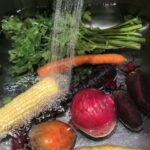
6.1 GENETICALLY MODIFIED ORGANISMS
Now let’s dive deep into the world of genetically modified organisms (GMOs). The topic of GMO has been quite controversial. Recently, debates are sparking as to whether genetic modification in agriculture is more beneficial than it is causing harm.

Genetically Modified Organisms (GMOs) are living matters that have their genetic material artificially manipulated through genetic engineering for many reasons such as increasing yield, faster cultivation etc. Genetic engineers create a combination of bacteria, virus plants and animal genes that do not occur naturally or in traditional breeding methods. In agriculture, the main focus of genetic modification is to develop traits that allow drought tolerance and increased yield. Farmers introduce genetically engineered DNA to their crops in order to: increase resistance to insect damage, increase tolerance to herbicides, increase resistance to plant virus and to increase crop yield. All these help farmers to: maintain weeds without damaging the crop itself, apply fewer and less pesticide spray to protect crops and also reduce labor load. An example of a successful GMO plantation is of the papaya called ‘rainbow papaya’, it was developed to be virus resistant in 1998 as a result of the ringspot virus that threatened the papaya industry of Hawaii. Another great example of successful GMOs is of the eggplant developed to be insect resistant. This has now been released in Bangladesh and as result farmers growing bio-engineered eggplants are earning significantly higher than the organic farmers. However, this can be a curse in disguise. Let’s now explore the safety threats that GMOs possess.
Are GMO’s safe?
The introduction of foreign genes, bacterial vectors, viral vectors, viral promoters and antibiotic markers have now caused new and unexpected health risks. GMO surely has many advantages and benefits economically and industrially but what about the impact it has on human health? In 1992, the United States Food and Drug administration (FDA) ruled out that ‘genetic engineered foods present no different risks than traditional foods’, this statement has been disagreed by many as comparing synthetic food items to natural food items is scarcely credible. Here are some negative impacts of GMOs on health:
1. Allergic reactions: Genetic engineering can possibly transfer allergen factors from foods that naturally carry these factors to foods that don’t normally contain these allergens. So, if a person that is allergic to certain factors consumes food that they would have otherwise thought was safe are now at risks of an allergic reaction. Allergic reactions can be minor or major leading to an obstruction in the airway which can cause death.
2. Antibiotic resistance: GMOs can make disease-causing bacteria to be resistant to antibiotics. This can result in an increased spreading of infections and diseases.
3. Cancer: Some GMO foods can increase the likelihood of developing cancer, this is because cancer is caused by genetic mutations then it would be unsafe to introduce new genetic materials into the body.
To be on the safer side, it is better to opt for organic food choices, foods that have been grown naturally and have not be artificially tempered are the safest to consume without the risks of any negative impacts on health. In addition, natural foods contain higher nutritional value. Buying organic food items means you also supports and help local farmers that grow non-synthetic foods using traditional methods to enhance their businesses.
7.0 ORGANIC COSMETIC DERIVATIES AND INGREDIENTS
Our skins absorbs whatever is applied to it, so if we use skincare and cosmetics that are high in chemical content the end result will be damage to skin and potentially cause skin cancer. Skincare and cosmetics have always been in practice since from early years in history, the only difference is now the cosmetics used are industrial whereas in the past it was all natural. In India, women previously used turmeric to treat hyperpigmentation and brighten the skin. Likewise, in Morocco the women traditionally used the natural Moroccan black soap to brighten any skin discoloration. Nowadays, skin bleaching using drugstore products are on the rise in many regions of the world including Africa, South Asia and East Asia. Some cosmeceutical companies have starting producing cruelty-free and chemical free skin care and makeup items using various natural organic substitutes. The mainstream method used is natural colorants to produce different colorful makeup palettes, some natural elements are also used in creating skincare products in order to give the best and healthiest results. Below are a few examples
13 organic colorants and ingredients for skincare
1. Acai: Acai berries have dark purple color. The main chemical pigments that give the distinct purple color are Cyanidin-3-rutinoside and Cyanidin-3-glucoside. Acai berries are healthy and safe to use on cosmetics in order to produce purple-colored palettes.
2. Beetroot: A popular colorant used to create a bright pink color. Beetroot contains betanin which breaks down when exposed to light, heat and oxygen giving its unique color. It is mostly used in water-based natural cosmetics.
3. Carrot root: Containing carotenoids, these are pigments that give many plants their colors including carrots. Carotenoids are one of the largest groups of oil-soluble pigments found alongside chlorophylls. This is used to create orange colored makeup products.
4. Henna: One of the most popular methods, henna has been used for the longest times and applied directly on the skin or infused in other products. It contains a compound known as lawsone which is a red-orange die found in the leaves of the henna plant.
5. Hibiscus: This flower is red in color as it contains Cyanidin-3-sophoroside pigment. This is thought to be native to West Africa. It can be infused in cosmetics for its unique color.
6. Saffron: Known as one of the most expensive ingredients in the culinary world. It contains a yellow pigment coming from crocetins. Saffron also contains vitamins and a distinct aroma. This is native to Iran
7. Spinach: The leaves of spinach contain chlorophyll as its major pigment giving it that deep green color.
8. Turmeric: Also referred to as the Indian saffron, it contains rhizomes. This can be used as a coloring agent, a spice and also medicinal used.
9. Pomegranate: They contain anthocyanins which are water-soluble pigments giving pomegranate an attractive red color.
10. Red sandalwood: A complex molecule called santalin can either yield an intense red color or a yellow color. Sandalwood is also hydrophobic, so it cannot be used in making water-based cosmetics.
11. Aloe vera: Contains biologically active substances including vitamins BI, B2, B6, enzymes, glycoproteins and phenolic compounds. Used in skincare for the purpose of reducing stretchmarks in pregnancy and healing sunburns.
12. Argan oil: Native of Morocco, contains vitamin E and A. Argan oil helps with hydration of the skin and regulates the skin’s production of sebum. This is usually found in organic skin care products for babies.
13. Chamomile: Packed with various bio-active ingredients such as flavonoids, lactones and glycosides. It is used mostly for its anti-inflammatory properties, it is also able to penetrate deep into the layers of the skin hence it infused in creams treating skin irritations, sunburn, rashes and eczema.
8.0 CONCLUSION
Now that we have explored the medium of organic farming and bio synthetic agriculture, the health benefits of products derived from organic cultivation, the methods used in order to ensure for a successful chemical free farming experience, natural cosmetic and medicinal derivates. It is only beneficial to ask ourselves what this means for our future or for the health of our future off springs. The essential point to consider about organic food and products is that the foundation which is the cultivation method used to grow crops has to be organic in order to ensure for a healthy and nutrients packed products. This ensures for a life with decreased risks of diseases, lower level of obesity, and lessened diet related health complications. The greatest factor that demotivates people to choose organic options when shopping is the cost. Natural biologically farmed produce tends to be a little more costly but it can be considered as a health investment. An unhealthy chemical-full lifestyle will cause various health complications which will generate high medical expense.
Think about ways in which you can incorporate environmentally friendly alternatives into your life. Consider the products you are applying onto your face and skin and not only what they are meant to achieve but also how they are made or what they are made out of.
With that said, if you are now at a supermarket with the option to choose organic or inorganic produce, which option would you choose?
